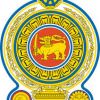ශ්රී ලංකා තේ පර්යේෂණ මධ්යස්ථානය
History
TRI was first established in 1925 as an arm of the Planters’ Association of Ceylon, in order to enrich the tea industry through professional research findings. The institute had its early beginnings in Nuwara Eliya town with a representative nucleus of staff undertaking research in make-shift laboratories with very modest equipment and then transferred to the present location, the St. Coombs Estate in Talawakelle, in December 1929.
Gradually TRI spreads into all tea growing areas of the country by establishing regional centres in Passara (Uva region), Kandy (Mid country region), Ratnapura (Low country region), Galle (Galle District), Deniyaya (Matara and Hambantota Districts) and Kaluthara (Kaluthara District). The two estates, St. Coombs in Talawakelle and St. Joachim in Ratnapura, which are operated under TRI, provide facilities to undertake research in cultivation and processing while making some earnings to the institute.
Our Vission
To achieve excellence in tea research and to provide technological guidance to the tea industry, in order to make Sri Lankan tea the most preferred tea in the world, at a competitive price.
Our Mission
To generate and transfer scientific knowledge and technologies appropriate for the stakeholders to improve productivity and quality of Sri Lankan tea in a most profitable manner.
Tea Research Institute of Sri Lanka Talawakelle



